Kyoto: A Buddhist View (Part 2)
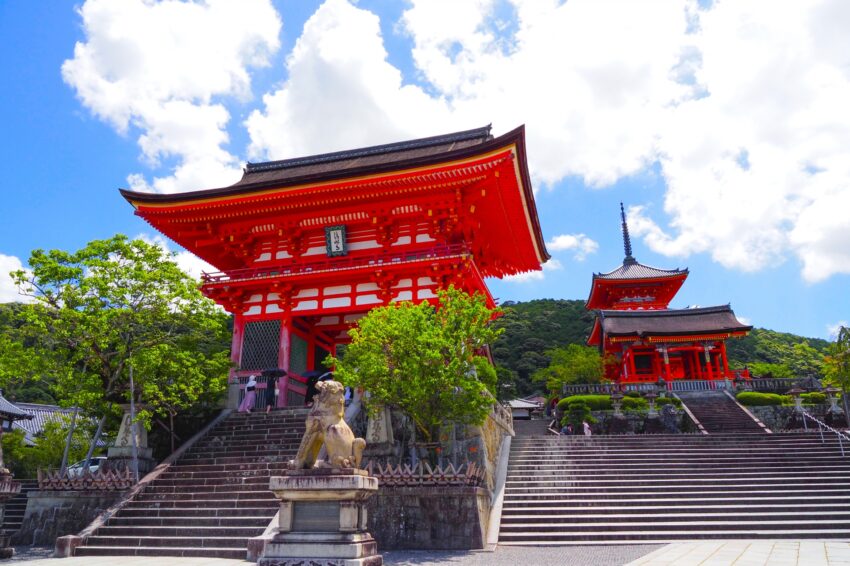
Top Photo: photoBさん on PhotoAC
We continue with author Nicholas Lemon’s travelogue of popular sites in Kyoto, with an emphasis on their history as related to Buddhism.
Identifying a Buddhist Structure
The Niō of the Niō-mon gate are Mahayana Buddhist deities that originate from Hindu devas (demi gods) given the task to guard the temple grounds from evil intentions. Their gaze is fierce, and many Western people mistake them for demons. Devas are deities borrowed from Hinduism and many Buddhists like myself understand them to be allegorical archetypes as opposed to supernatural beings.
The Sanju no tō pagoda symbolically represents the Buddha’s transcendence into parinibbāna (Pali for the ascension into eternal Nirvana upon enlightened person’s death). Yet the function of Japanese pagodas has changed over time and between sects. It is not uncommon to see depictions of Gautama Buddha (the first Buddha, and my principal Buddha), Amidha Buddha (the Pure Land sect’s principal Buddha), or Vairocana (Dainichi) Buddha (the Shingon sect’s principal Buddha) among a procession of devas. Since pagodas are actually successor edifices to stupas (burial mounds encased in stone), they were traditionally used to house the remains and relics of deceased monks. Some pagodas may still serve this function.
But that purpose has mostly been given to the shariden in Japanese sects (this structure will be discussed in more detail below). The Kyo-Dō houses the library of sutras (Buddhist literature) and reading/study rooms. The Kaisan-dō commemorates the abbot and his line of succession within the monastery. Each of these buildings is expressly Buddhist, but they resemble Shinto shrine color schemes. And whenever I inquired about this, I was given the same ambivalent reply as always.
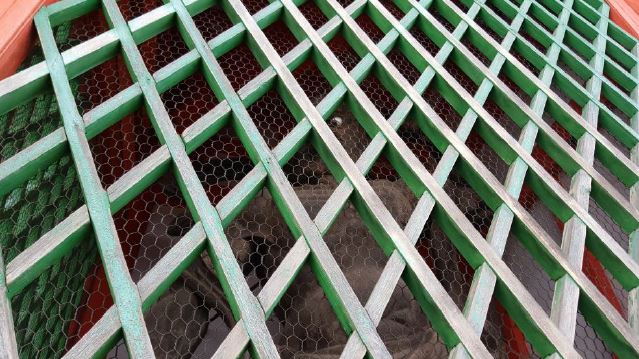
Photo: Kiyomizu-dera, Niō-mon Deva guardian gate, (September 2017), Nicholas Lemon
The Mystery Deepens
Luckily I have taken some knowledge with me from my time living and studying in China before moving to Japan. And there I learned that the Tang dynasty (c. 618- 907 CE, China’s contemporary era to Japan’s Nara period) featured the great Dàcí’ēn Sì (大慈恩寺 literally “the Temple of Grand Benevolence”) in Xi’an. And I visited the reconstruction of that very temple just months before my arrival in Japan in 2016. And Dàcí’ēn Sì was an ancient center for the Fǎxiàng-zōng sect of Chinese Buddhism, which is pronounced Hossō-shu in Japanese- the Hossō sect.
After looking back at my materials from Dàcí’ēn Sì, I learned the sect has the tradition of using red on white as a scheme for their buildings that goes back to the Tang dynasty. And the reconstructed structures reflect that tradition today in modern Xi’an.
Kiyomizu-dera is actually considered a branch temple of Kōfuku-ji temple in Nara and was commissioned by shogun, Sakanoue no Tamuramaro (758-811 CE). There is a long circulated tale that the founding abbot I mentioned earlier was the esoteric monk named Enchin (814–891 CE) (this is dubious for many reasons, notably Enchin’s sectarian affiliation and the fact he was not a contemporary of Sakunoe no Tamuramaro).
The Story of Enchin
As the story goes, Enchin dreamed that Kannon, the bodhisattva of mercy and compassion, urged him to navigate the Kizugawa River from Nara and to find a font flowing with pristine waters. Upon his whimsical journey to Kyoto he discovered Otowa waterfall in the Higashiyama mountain range.
A Buddhist hermit named Gyōei Koji was waiting for Enchin there to lend him a sacred piece of wood so that he may carve a statue of Kannon and enshrine it at his home atop the mountain. Sakanoue no Tamuramaro eventually discovered Gyōei Koji’s abode in Higashiyama while hunting deer and seeking a means to pray for his ailing wife.
The shogun met Enchin at the newfound altar and was given a lecture inspired by the parables of Kannon. He was given the invaluable hōgo (法語 translated “dharma talk” or “sermon”) on the sanctity of all life, and that compassion prevails over all unskillful mental states.
Sakanoue no Tamuramaro was overcome by his own guilt for killing a deer so close to Kannon’s sanctuary that he was a Buddhist convert on the spot. He consequently ordered a larger structure to be built upon the Otowa mount and waterfall, and this was the point from which the rest of Kiyomizu-dera was built and it was administered to be put under the jurisdiction of Kōfuku-ji in Nara.
Next Time: The Golden Pavillion!
This early relationship with Nara as its headquarters stands out in Kyoto as it is a contrast with a majority of Kyoto’s popular temples which are typically headquartered within Kyoto city. One easy example comes to mind: Kinkaku-ji (金閣寺literally “Golden Pavilion Temple”; officially Rokuon-ji鹿苑寺, literally “Deer Garden Temple”), although more famous by leagues than its headquarters, Shokoku-ji temple (相国寺), it is still headquartered in the latter’s location, in a more discreet property at the center of Kyoto city.
Speaking of which, on the topic of painted and gilded edifices: The discussion of Kinkaku-ji’s golden pavilion often centers around the significance of gold in Buddhist settings. To many, it seems this extravagant choice for Buddhist architecture is out of place. And I was initially on the critical end of this debate, but my stance has shifted, if just a little since. So, to explain what I mean, let’s go further north into Kyoto’s Kitayama district to discuss Kinkaku-ji…
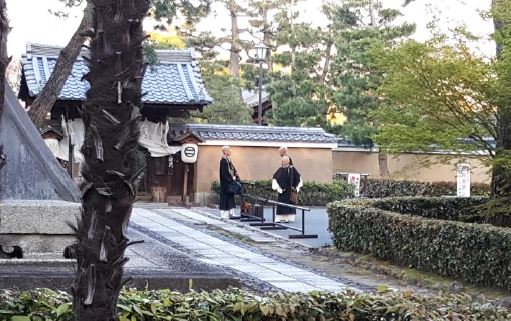
Photo: Zen monks at Shokoku-ji Temple’s Senmon Dōjō, (November 2019), Nicholas Lemon
Join us this Friday for the continuation here on MUSUBI!
Photo Credits:
Top Photo: photoBさん on PhotoAC
Additional images provided by the original author (Nicholas Lemon), used with permission
All other content (text) created by the original author and © 2023 MUSUBI by Borderlink
RELATED
-
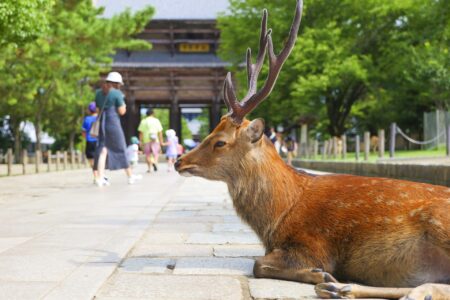
5 Things To Find In Nara
Top Photo: photoBさん on PhotoAC The city of Nara is the historic and spiritual center of Japan, where Buddhism … -
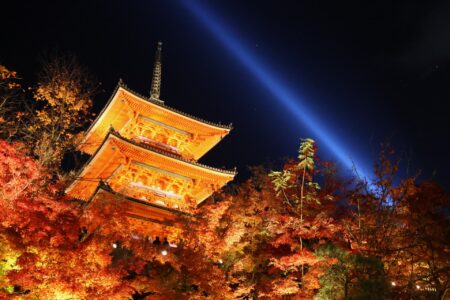
Kyoto: A Buddhist View (Part 1)
Top Photo: LeonardoYasuさん on PhotoAC Over the next week, join author Nicholas Lemon for an insightful and uniq… -
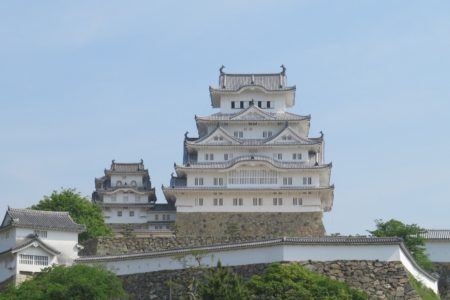
Going Beyond the Big City
Top Image: Borderlink Staff Member, used with permission Japan is a country that is steeped in a rich history …
PEOPLE

Nicholas Lemon
From the USA
He has lived in Japan since 2016 as a full-time teacher, graduate student, and part-time tour guide in Kyoto for two years


